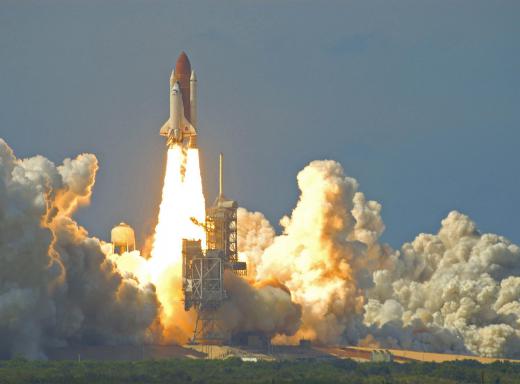What Was the Challenger Disaster?
 Michael Anissimov
Michael Anissimov
The Challenger disaster occurred when the Space Shuttle Challenger exploded over the Atlantic Ocean 73 seconds after launch, on the morning of 28 January 1986. All seven astronauts on board, including the first member of the Teacher in Space Project, Christa McAuliffe, were killed. The disaster caused a 32-month moratorium on shuttle launches and the formation of the Rogers Commission, which included Nobel laureate Richard Feynman, to investigate the cause of the tragic incident.
After an investigation, the Rogers Commission found that the Challenger disaster was caused by the failure of an O-ring seal on a solid rocket booster at liftoff. This created a breach which allowed combustible material from inside the booster to impinge upon the adjacent and much larger external tank, leading to structural failure. The solid booster also separated from the shuttle. This perturbed the aerodynamic equilibrium of the craft, causing it to break apart. Various portions of the craft were submitted to acceleration factors of as much as 20g, well over its design limits. At such high speeds, this is very fast and deadly. After an extensive search, many components of the Shuttle were recovered from the sea floor. Some of the crew’s remains were buried at the Challenger Memorial in Arlington National Cemetery.

The Challenger disaster is a case study in the inherent danger of spaceflight. On 1 February 2003, the spacecraft Columbia disintegrated on reentry, killing another seven astronauts, showing that the Space Shuttle has more than one catastrophic failure mode.
The Rogers Commission found that NASA’s organizational culture was a primary reason for the accident. Managers at NASA were aware of a weakness in the O-rings since 1977, nine years earlier, but had failed to address it. These weaknesses were due to a temperature-vulnerable design in the O-ring by an external contractor, Morton Thiokol. The launch took place after an especially cold night during which ice accumulated on the tanks and caused the O-rings to drop below their minimum operating temperature. Even just a couple seconds after launch, the O-ring failure already allowed superheated gas to escape from the side of the solid rocket booster. By a little more than a minute after launch, it resulted in the abnormal plume and the cascade of effects which led to the destruction of the Challenger.
AS FEATURED ON:
AS FEATURED ON:













Discussion Comments
I watched the Challenger launch live on TV, and I remember it wasn't covered like previous launches. The networks only cut away from regular programming at the countdown, and they went back to it for a few minutes without realizing what had happened. These space shuttle launches were getting to be routine at the time, and I never thought I'd see one of them end like that.
I remember there was some debate over the weather, because it got down into the 20s the night before the launch. I think they decided to wait until it got a little warmer before signing off on the mission. The lift-off itself seemed to move in slow motion, and I thought it didn't look normal. I still can't hear the words "go with throttle up" without wincing. It was a true national tragedy.
I was living near Huntsville, Alabama when the Challenger disaster took place, and many of the engineers and support crews had to be called into work to figure out what went wrong. It was a very tense time, since all the various contractors were trying to put the blame on each other for the failure. It took a long time to narrow the problem down to the O-rings and the temperature.
I remember turning on the television that morning and watching what I thought was the launch live on CNN. It turned out to be the first repeat after the accident, and I heard one of the announcers say "Okay, this is when the problem started." Ten seconds later, I saw the explosion. I thought I was watching a Hollywood disaster movie.
Post your comments